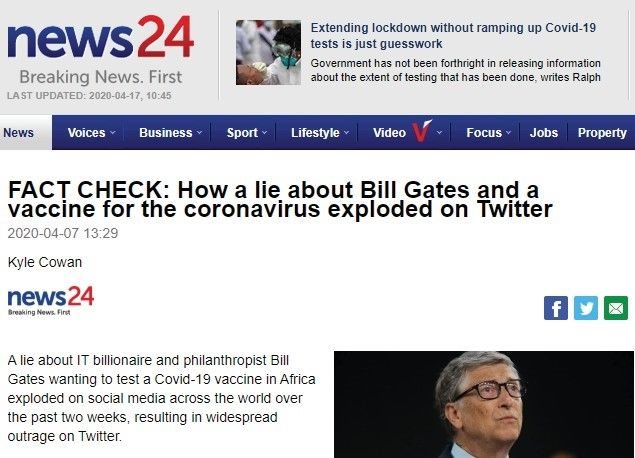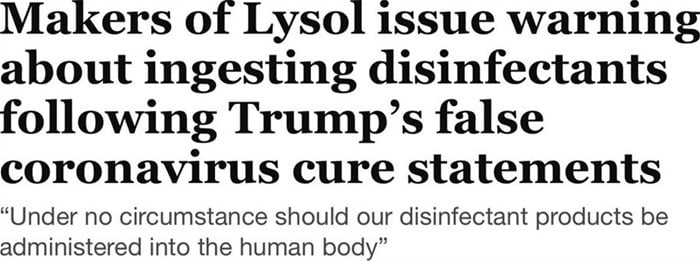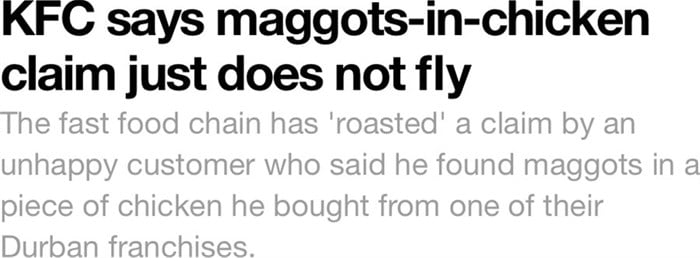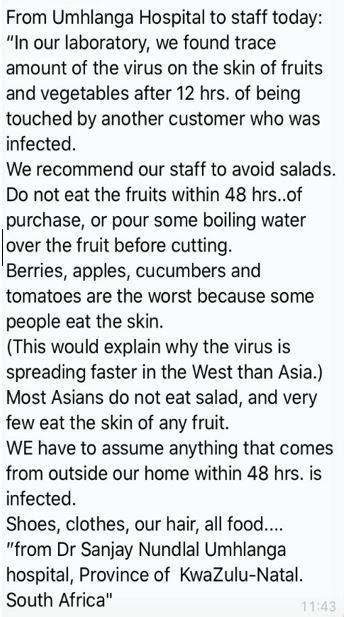Getting real about fake news
‘Fake news’ is simply a current term for false information which spreads widely. It can be misinformation (defined as material, which is incorrect, but the propagator does not know or believe it to be false) and dis-information (which is material that is deliberately incorrect).
Social media has proven to be a devastatingly effective spreader of false information, far faster and to a far wider audience than was ever possible before.
It’s fake news that ‘fake news’ is a new thing
Fake news by any other name has been around for millennia.
Octavian killed himself in 14 AD after false rumours of Cleopatra’s suicide and Benjamin Franklin created a fake issue of the Boston Newspaper in the 18th century to build sympathy for the American Revolution. The specific term has gained currency through Donald Trump’s persistent use of it.
Why does fake news exist?
Fake news has two key drivers. These two drivers are not mutually exclusive. Often, they inter-connect.
Money
- Revenue through clicks.
- Selling a product or service based on false or hyped information.
- Extortion.
Power
- Discredit a rival.
- Forward a political or business agenda.
- Sway voters or public opinion.
- Divert attention.
The problem is getting bigger not smaller
While there is some evidence that consumers are getting smarter at filtering fake news and that some audiences are less susceptible to its influence than had been feared, there is now a high-tech industry devoted to generating fake news for either political or commercial gain.
The ‘product’ is evolving and getting more sophisticated. Of concern is the rise of deep fake video which can credibly create a video of someone saying something they never said.
Even trusted news brands fall for fake news. News24.com spread a false story in April 2020 about Covid-19 vaccine trials in Africa that was highly damaging to the Gates Foundation.
What does this have to do with brands?
Currently, most of the fake news is connected to political or social issues. But brands have been negatively impacted by the phenomenon in the past and will, we believe, increasingly become either collateral damage or specific targets.
Brands and fake news
Some examples
Disinfectant manufacturers had to issue warnings to consumers not to ingest their products after a media briefing by President Trump suggested this might be effective in fighting Covid-19.
Coca-Cola had to handle a story spreading through Facebook that its Dasani bottled water had parasites in it.
KFC in Durban were the target of a man posting a fake video of an alleged KFC Meal containing maggots. It revived interest in an old story which had spread on social in 2015.
In short, what do brands need to do about fake news
1. No one connected to the brand should be, either deliberately or inadvertently, involved in the spreading of fake news, either personally or in the brand’s name.
2. No one in the business should ever be acting on news or information that is fake.
3. Brand teams need to have plans in place to be aware of, to analyse, and, if necessary, to counter-act fake news connected to the brand.
4. Brand advertising should never appear on websites known for fake news, or alongside fake news items. This can damage a brand’s credibility. Another concern is fake audiences - Pixelate’s research in 2017 showed 20% of pay-per-click conversions are fraudulent. These media placement issues are not addressed in this white paper – they require different expertise and analysis.
Identifying fake news
Everyone connected to a brand should be alerted to their responsibilities regarding fake news, especially during the current pandemic where rumours can spark significant consequences.
This is a responsibility as an individual citizen and as an employee of a brand.
Now, WhatsApp is a particularly virulent space for the spreading of fake news, even with the new limitations on numbers of addresses for sharing. This is probably because the medium feels more personal than Twitter, Facebook and Instagram.
No one should share ‘news’ in any way without applying a filter for telltale signs of fake news:
- Passed on virally to you.
- The person sending it thinks they are alerting you.
- The person is reinforcing their own confirmation bias.
- No contact information provided, or it is false.
- Purports to come from a figure or institution of authority.
Claims will be attention grabbing
- URL seems odd.
- Doesn’t exist on Google.
Fake news example via WhatsApp
Warning signs
- Four hospitals in Umhlanga. Two are Psychiatric. One Netcare. One Public. None have a lab to study the surface of fruit or salads for viruses.
- Customer vs Patient.
- Not true. Diet is high in fruit, vegetables, legumes, nuts.
- Dr Nundlal is registered as a private GP.
Fake news example via WhatsApp

Warning signs
- Brand name used to give authenticity. This could be your brand next.
- Spot the political agenda. Also Roche is a Swiss multi-national, not American.
- Spelling and grammatical errors.
- Call to action to share. Note the emotive appeal.
Brand planning
The 4IR model provides a good structure for brand planning around fake news.
1. Radar
2. Readiness
3. Recovery
4. Rapid Response
1. Radar
Awareness is key. The brand needs solid monitoring tools that cover as many media bases as possible and offer decent, fast analysis of potential impact. It is vital that any brand mention is reported with some level of analytics which can determine whether the ‘news’ – fake or otherwise - warrants a response.
Monitoring tools are a specialist topic for another space but the Ogilvy Social Intelligence approach is designed to analyse the daily evolution of your consumer, competitors, and category (and to catch any fake news stories).
Consumer
We combine social conversation and search intent to monitor your consumers’ behavior & interests and any shift in audience profile.
It includes:
- Social Listening.
- Search Intent Analysis.
- Community Analysis.
Competition
We combine qualitative and quantitative social performance data to identify how your competition is reacting during the crisis.
It includes:
- Competitive Audit.
- Paid Media Activity and Spend Analysis on Social Media.
Category
We investigate and measure trends to identify how categories and consumer behaviors are shifting with a specific lens on brands, publishers and influential voices who are leading in social responses.
It includes:
- Research.
- Key News.
Scenario planning
Work through all the possible variations of fake news stories and how damaging they could be for the brand. Every brand or category will have its own bespoke set of critical threats from fake news stories but in South Africa three ‘red alert’ areas are common to almost every brand:
- Racial issues.
- Product safety (including health & hygiene).
- Financial viability – closing down, going bankrupt, withdrawing from SA, retrenching workers.
2. Readiness
- Determine broad outlines of responses to damaging fake news stories.
- Identify your key spokespeople, base truths and facts & figures which support your response.
- Determine protocols for monitoring and reporting.
- Establish levels of alert to prevent a constant wave of unnecessary information washing through the system.
- 1. Warrant senior notification and do no demand a response or can be dealt with in a pro-forma way.
2. Out of the ordinary issues or those gaining some traction which warrant FYI notifications and monitoring without an immediate response or a response beyond the pro-forma.
3. Issues presenting a clear threat of brand damage either because of the seriousness of the issue or the volume (or potential volume) of coverage.
Have a base of media contacts and reliable sources that you can mobilise to negate damaging fake news.
3. Consideration
Considerations
- Don’t panic – not all fake news is equal.
- Carefully (but quickly) assess impact/influence of the story.
- Exercise judgement and be prepared to ignore those with little credibility or following.
- Narrowcast where possible. Reply using mechanisms which match your response with the reach of the fake news. Do not broadcast the fake news to people who are unaware of it. Start with @complainant.
- Only in ‘condition red’ circumstances issue general releases and go onto a broadband front foot to negate the fake news.
- Use credible media outlets for your response.
Search matters
Ideally the brand’s rebuttal will feature prominently on search findings because:
- A significant percentage of consumers will either find or verify the fake news via search.
- It is a form of narrowcast in that only people looking for the story will find it.
- It locks in the brand’s response for the future
- Google never forgets and it is important that a rebuttal is in place to forestall future attempts to resuscitate the story.
Search placing is dependent on the usual SEO techniques:
- Clear and transparent headlines which connect to the story.
- Citing legitimate third-party sources or credible independent spokespeople
- Gaining placement in credible media which search algorithms upweight – strong relationships with journalists & editors are important in this regard.
4. Recovery
- Monitor closely to ensure that the story does not break out again in a separate space. Be quick to ensure a fresh round of appropriately targeted rebuttals.
- Follow-up with media houses which published the story. Not to castigate or to burn bridges but to make them aware of the fake news they published.
- If the matter is severe – either reputationally or financially – consider approaching the social media platforms concerned to have accounts terminated or policies altered.
- Assess learnings from the process and revise protocols and procedures.
- Be aware that, digitally, the story never dies, and you may have to keep rebutting it well into the future – keep material on file and ready to go.
Conclusion
Frontline defense against fake news
Investment in long-term brand building provides the best form of initial protection against fake news.
The stronger your brand, and its positive identity with consumers, the more resilient it will be because:
- Consumers have a loyalty, and positive perceptions, which will resist fake news.
- Consumers will believe your responses.
- Media are likely to run corrections.
However, big brands are big targets, so investment needs to be made in the monitoring and response mechanisms we have detailed in this document.
Useful links:
South African National Editors Forum: Guide to Fake News https://sanef.org.za/wp-content/uploads/2019/02/UNESCO-Journalism-Fake-News-and-Disinformation-Handbook-for-Journalism-Education-and-Training-2018.pdf
CNN Report on Fake News Industry https://money.cnn.com/interactive/media/the-macedonia-story/
Facebook Efforts to Combat Fake News https://web.facebook.com/facebookmedia/blog/working-to-stop-misinformation-and-false-news
Contact
Patrick Conroy
Head of Strategy – Ogilvy Public Relations
az.oc.rpyvligo@yornoc.kcirtap
Melissa Attree
Creative Director - Ogilvy Public Relations
az.oc.yvligo@eertta.assilem
- Ogilvy strengthens its digital services offering and rebrands as Ogilvy One 24 Apr 2024
- Ogilvy leads creative rankings at International Clio Awards 2024 16 Apr 2024
- Ogilvy South Africa invests in further growth of its digital creative hub, C2 Studio 26 Mar 2024
- Ogilvy’s new AI-driven campaign for Audi, makes the impossible possible 25 Mar 2024
- Ogilvy launches a Creative Technology Academy for emerging South African Talent 18 Mar 2024
Ogilvy South AfricaOgilvy South Africa offers integrated creative advertising agency and marketing services from offices in Johannesburg, Cape Town and Durban. |




